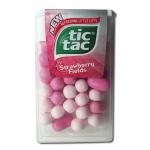
Other names for the additive (synonyms)
General Information
Additive E903 (carnauba wax) is a plant-derived wax obtained from the leaves of the Brazilian wax palm Copernicia cerifera. In nature, the leaves of this palm secrete wax that protects them from the intense tropical sun. To produce the additive, the leaves are cut, dried, and the wax is gently scraped off, then washed, boiled, and, if necessary, refined or bleached. In its natural form, the color of additive E903 ranges from white-yellow to light green.
Chemically, additive E903 is a complex mixture of esters, free acids, alcohols, hydrocarbons, and resins. The melting point of carnauba wax is one of the highest among natural waxes — approximately 83–86 °C.
Effects on the Body
Benefits of Additive E903
Carnauba wax is not a biologically active substance and is not inherent to the human body. When used in food, it does not provide direct health benefits, but it offers valuable technological properties — for example, creating a glossy coating.
Risks of Additive E903
Despite the limited data on chronic toxicity and the absence of reports on carcinogenicity or genotoxicity, the safety of its use has been confirmed by EFSA. The EFSA Panel on Food Additives and Nutrient Sources states that carnauba wax is practically not absorbed in the human gastrointestinal tract, and the products of its hydrolysis are easily incorporated into normal metabolic pathways.
Toxicological studies have shown no adverse effects — the NOAEL in rats was 8800 mg/kg body weight per day in a 13-week study and 1500 mg/kg per day in a 90-day study. Exposure assessments, considering permissible levels in food products, showed sufficient “margins of safety,” which led to the conclusion that there is no health risk at current use levels and no need to establish an Acceptable Daily Intake (ADI) for additive E903.
Officially, the European Food Safety Authority (EFSA) does not confirm the existence of allergic reactions to carnauba wax. However, occasional online reports suggest that some individuals may have sensitivity to the wax coating of fruits, which may include additive E903.
Uses
Carnauba wax is used as a glazing agent. Additive E903 forms a coating that adds shine, protects the surface of products, and extends shelf life. In the food industry, it is used to glaze candies, chewing gum, confectionery (up to 500 mg/kg), fruits (up to 200 mg/kg), and chewing gum — up to 1200 mg/kg.
In addition to food applications, carnauba wax is used:
- in cosmetics (common in lipsticks, blush, creams, mascara, deodorants as a thickener and stabilizer);
- in pharmaceuticals (as a coating for tablets);
- in shoe and furniture polishes;
- in the production of automotive waxes.
Legal Status
In the European Union, additive E903 is permitted only as a glazing agent in accordance with Regulation (EC) No 1333/2008.
Additive E903 is also recognized as safe (GRAS) in the USA and is allowed in glazes and coatings. In Ukraine, Canada, Japan, and many other countries, carnauba wax is likewise permitted for use as a food additive.
